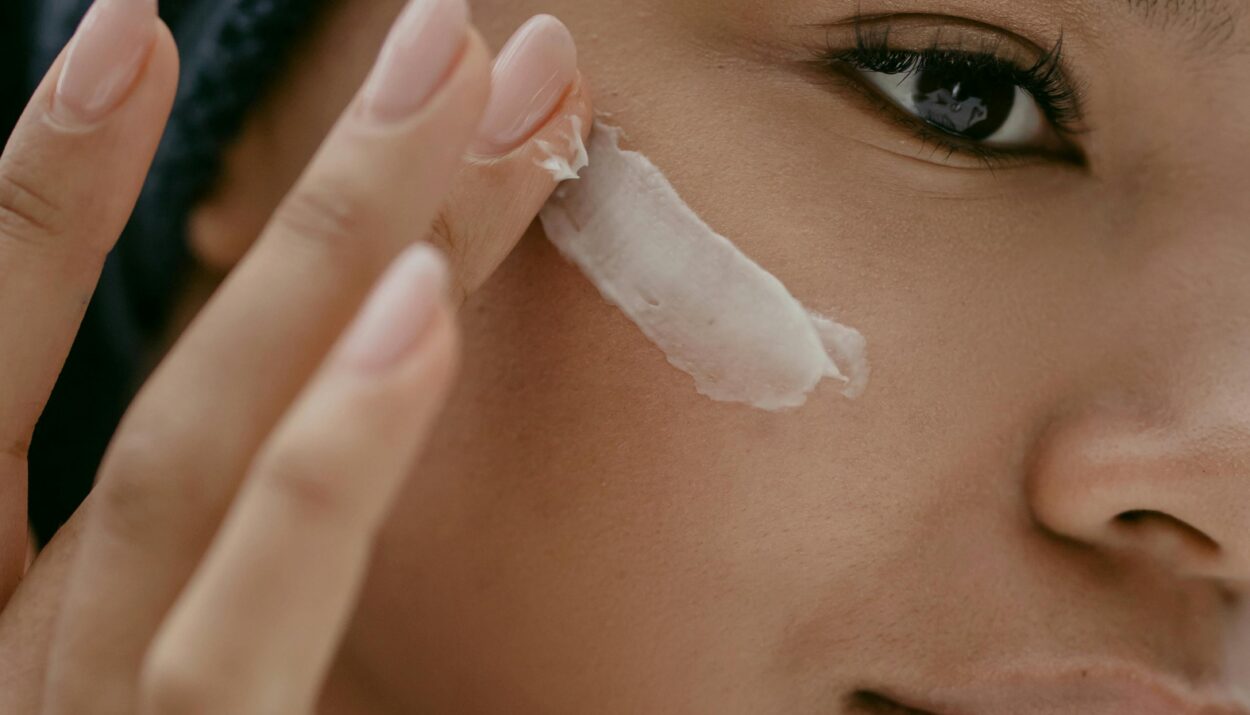Words Zu Anjalika Kamis Gunnulfsen Picture CottonBro Studio
Sunscreen, is it a necessity?
I am based in Malaysia. Malaysia crosses the line of the equator, meaning it is hot, and humid with an average temperature of 25 degrees Celsius. Just a 15-minute’ walk out can result in excessive sweat and a sticky situation. While the heat and the sun are much-needed components to my being, it is also the bane to certain activities. Now, sunscreen, that’s another story.
Getting the correct one to complement my dusky complexion isn’t the easiest of tasks. The grey cast it sets upon my skin is enough to send me running back to the bathroom and have them cleaned off.
Then, comes the question of how much is enough. We were once told, that the higher the number on the tub, the better the coverage. I used to grab tubs with numbers ranging from SPF60 to SPF70 and dismiss anything under the SPF50 range. However, now, according to dermatologists everywhere, SPF 15 is sufficient if you don’t plan to be in the sun for a prolonged period. If frolicking under the sun is your activity of choice for the day, then SPF30 will do the work.
Two types of UV light are proven to contribute to the risk for skin cancer: Ultraviolet A (UVA) has a longer wavelength. It is associated with skin ageing. Ultraviolet B (UVB) has a shorter wavelength. It is associated with skin burning. The SPF is a measure of how much harmful ultraviolet rays it absorbs or reflects away from your skin. The SPF rating only refers to UVB rays. An SPF 15 sunscreen blocks 93% of UVB radiation, and SPF 30 blocks 97%.
Our homo sapien ancestors are believed to be dark-skinned, being originated from the African continent. Until very recently, darker complexion is believed to have natural melanin that protects them from the sun. Between 70,000 and 60,000 BC, the slow migration to colder climates happened, making them lose their natural pigmentation. Lighter pigmented skin means protection against the sun is also diminished. However, it wasn’t until much later, around 3100BC that sun protection was created. This was solely for cosmetic and beauty reasons. The Egyptians, who were the first creators of sun protection, did it because lighter skin is considered more desirable. They used rice bran, jasmine and lupine to block the tanning effects of the sun.
European women of the 1600s used facial veils made of velvet to protect their faces against the harshness and darkening effects of the sun. The use of whitening creams and concoctions containing lead was also prevalent in those days.
In 1801, Johan Wilhem Ritter, a German physicist, chemist, and philosopher discovered UV radiation which can cause skin burns and erythema. It wasn’t until 1891, Dr Hammer, yet another German, doctor, recommended the use of chemical sunscreens to protect human complexion from the harmful UV rays – the same rays that are causing sunburn. Following that, scientists began to study the harmful effects of the sun, thus discovering links between the harmful rays and skin cancer.
In 1928, an animal study on mice was done which further confirmed the correlation between UV radiation and skin cancer. It was also in the 1920s when Coco Chanel popularised the tanned look. Pictures of her vacationing and sunbathing on a Mediterranean cruise, all brown–looking leisurely and privileged were circulated. Brown skin has become the new beauty standard in the western culture, which remains true up till today.
Experts everywhere have to reiterate the importance of sun protection, especially with this new “tanned-look” upheaval. The 1980s was the cornerstone of the sun care industry when SPF became the standard “ratio of UV energy” needed to produce a minimal erythemal dose on protected and unprotected skin.
Fast forward some years later, raising concerns about sunscreen ingredients and what they will do to the skin and underwater ecosystem come to light, naming a couple of highly used components in the manufacturing of sunscreens.
- Oxybenzone, also known as Benzophenone-3, is an organic compound commonly used as an ingredient in sunscreen and other personal care products. It belongs to a group of chemicals called benzophenones. This ingredient causes skin irritation, acts as a hormone disruptor, and gives allergic reactions to certain individuals. It has also been found to have negative impacts on coral reefs when released into the water. Some countries have imposed restrictions or banned its use in certain concentrations due to environmental concerns.
- Ethylhexyl Methoxycinnamate (EHMC) or Octinoxate is a common ingredient found in many sunscreens. Its primary role is to absorb UVB rays. Some studies, however, suggest that Octinoxate may have hormonal activity and potential endocrine-disrupting effects.
- Avobenzone is an ingredient that is known to be an endocrine disruptor. Some studies have shown that some individuals may be sensitive or allergic to avobenzone.
It is important to know that sunscreen products often combine multiple sunscreen ingredients to provide broad-spectrum protection, meaning one, if not all of these components might have been added to your sunscreen to provide broad-spectrum protection.
While these ingredients may interrupt consumers hormonally, cause reactions and what’s worse, cancer-causing, it is also a huge industry – one that is making profits for the manufacturers. The global market for Sun Care Products estimated at US$11.9 billion in the year 2022, is projected to reach a revised size of US$23.2 billion by 2030.
The United States FDA or Food and Administration Department puts the approval of sunscreens under the drug and medicinal segment, making it harder for approval. This is based on the reasoning of sunscreen claims of evading skin cancer when used. However, this regulation also makes it harder for other sunscreens from everywhere else in the world to penetrate the U.S. market. Sunscreens from Japan and South Korea are the prime examples of how hindering this law is when it comes to launching in America. This has raised questions especially when Japan and South Korea are the leading countries in the cosmetic and skincare industry.
Sunscreens from Korea, Japan, even France and Australia use UV-blocking ingredients that are not yet approved in the United States. This component has resulted in far more advanced sunscreens in these countries, offering better protection against both UVA and UVB rays while also providing smoother application and lesser to no grey casts.
Gabriella Beaumont-Smith, a policy analyst at the Cato Institute, said “Some of the ingredients approved in the EU and Japan are more effective and long-lasting than those sold in the U.S”.
The FDA has not approved a new UV filter since 1999.
Then, comes the question of chemical or mineral sunscreens. Let’s unpack the differences for easier decisions, shall we?
The major difference is while chemical sunscreen gets absorbed by the skin, its mineral counterpart lets the screen sit on top of the skin while blocking the rays out. These two types of sunscreens also wear differently. Mineral ones are usually associated with thick consistencies and make the skin look ashy. The chemical sunscreens tend to be lightweight, creating a sheer look. However, the lightweightness does not stop the skin from being clogged and irritated, hence causing breakouts. This is perhaps due to the ingredients of most chemical sunscreens. Many users state this reason as to why they skip sunscreens altogether.
While the choice is geared towards personal preferences, dermatologists recommend the use of mineral sunscreens mainly because the formulation is not absorbed into the bloodstream, which also works better for babies and pregnant women.
How can we know that the usage of sunscreen is a necessity not just as a money-churning project for those behind them?
Users have to be savvy when selecting what to put on their skin, especially when we are talking about creams and potions that are absorbed directly into their skin and bloodstreams.
The after and side effects are usually not immediate. While there are many conflicting opinions on the usage or non-usage of sunscreens, perhaps, it is safer to use one that acts as a block and dispersant than that of an absorption. Moreover, centuries ago, some of our ancestors have known the benefits of protecting against the sun – this was when profit-making wasn’t the priority, but rather beauty was. Also, remember that the cost of the sunscreen, famous brands, endorsed by your favourite influencers or celebrities meant very little. Our needs, requirements, and sensitivities vary. Choose a sunscreen that is right for you.
Also, never underestimate the use of a wide-brimmed hat!






